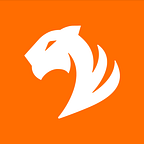It is Time for a Modern Graph Query Language
The time is ripe for an international standard graph query language. Industry vendors including Neo4j have called this out, and we at TigerGraph wholeheartedly agree. As graphs continue to see widespread adoption, we have certainly reached a tipping point for our industry.
Still, it is important to note that an older solution with more marketing spend behind it doesn’t necessarily lend itself as the best option. Performance, expressiveness and ease-of-use are key for determining the right query language fit to help graph cross the chasm to the mainstream.
Graph technology continues to serve as an important driver of digital transformation initiatives for organizations across the board. Unlike previous solutions, graphs offer the unique and very valuable ability to unleash new insights and business outcomes from interconnected data.
An international standard will help solve pervasive challenges in the graph market. These include the difficulty of finding proficient graph developers and the need to speed up enterprise ramp-up and adoption. My colleague and VP of Engineering Mingxi Wu discusses more in his blog. However, when it comes to evaluating a standard graph language, there are key things to consider, as Wu continues to outline and point out in detail.
Yes, enterprises are successfully using a range of query languages such as Cypher, Gremlin, GSQL and more. However as data and use cases grow and become more complex, organizations need both the ability to scale up and out, and the ability to generate the material performance impact needed for big data, for complex analytics (machine learning and AI), and for real-time operations.
While legacy graph products and query languages offer an incremental change, they are unable to entirely fulfill these needs and therefore drive true digital business transformation. Neo4j’s call for Cypher as the query language standard in the “Age of Graph” misses the mark.
The next phase of the graph database evolution needs the right query language. Industry requires a dramatic step away from inadequate legacy models to achieve digital transformation at scale. More than anything, what the market needs is a modern graph query language, along with a super fast and scalable system to support it.
GSQL is that language.
What is GSQL? It is the best modern graph query language on the market. It is user-friendly, highly expressive and Turing-complete. Unlike other options, GSQL supports the real-life business requirements organizations already experience.
I founded TigerGraph six years ago with the goal to deliver a graph database offering what enterprises need: real-time speed, big-data scale and ease-of-use. Our database team — who are experts in Massively Parallel Programming (MPP) — seriously considered each and every query language options available, including Cypher and Gremlin.
Our conclusion? Every query language we came across was inadequate in addressing real enterprise needs. Each missed the mark in delivering the features enterprises need in an age of real-time big data. These include ease of use, familiarity of SQL-like syntax and expressive power for solving real-world complex business problems, all with the performance of an MPP engine.
And so, we spent years to create a language that did. This was GSQL. Along with the TigerGraph MPP graph database, GSQL was engineered from the ground up to support parallel loading, querying and updates for real-time transactions and ultra-fast analytics.
Since publicly launching late last year, customer feedback on TigerGraph has been amazing. Time and time again we hear from customers who are delighted to gain data insights they previously thought were impossible given the limitations of legacy graph database solutions and query languages. In other words, by using GSQL they have made the impossible, possible.
Our customers also report GSQL’s ease of use for creating queries over their big data. Speed has been another benefit: queries using GSQL deliver results in seconds, compared to hours using Neo4j or DataStax, if the query is even possible at all. GSQL is in use by Alipay, the world’s largest graph deployment, with over 2 billion transactions per day (reads and writes). TigerGraph and GSQL are used in production to support multi-hop queries spanning 3–10+ hops, all in a graph with 100+ billion nodes and nearly a trillion relationships (see our benchmark report).
GSQL’s advantages over other graph query languages are well documented. The numbers prove it and I invite you to see the comparisons with Cypher and Gremlin for yourself here.
For those looking to migrate quickly and easily to GSQL from Cypher or Gremlin, contact us at devrelations@tigergraph.com to learn more our Query Language Migration Tool Kit.
Lastly, stay tuned for the release of our upcoming TigerGraph Developer Edition. We invite you to check out thefree trial of our enterprise version in the meantime.
It’s time for a powerful and user-friendly graph query language. GSQL has what matters most: performance, expressiveness and ease-of-use.
As the discussion continues, I’d love to hear your input. Contact me at yu@tigergraph.com.
